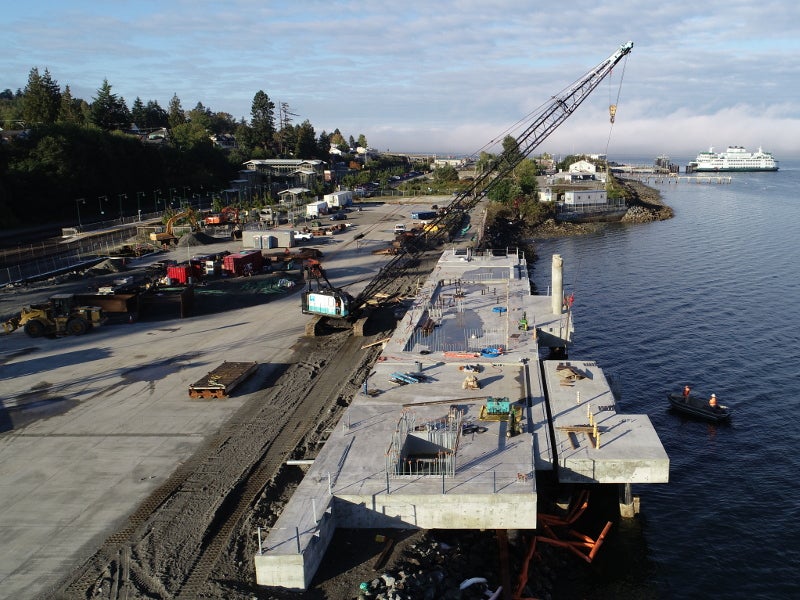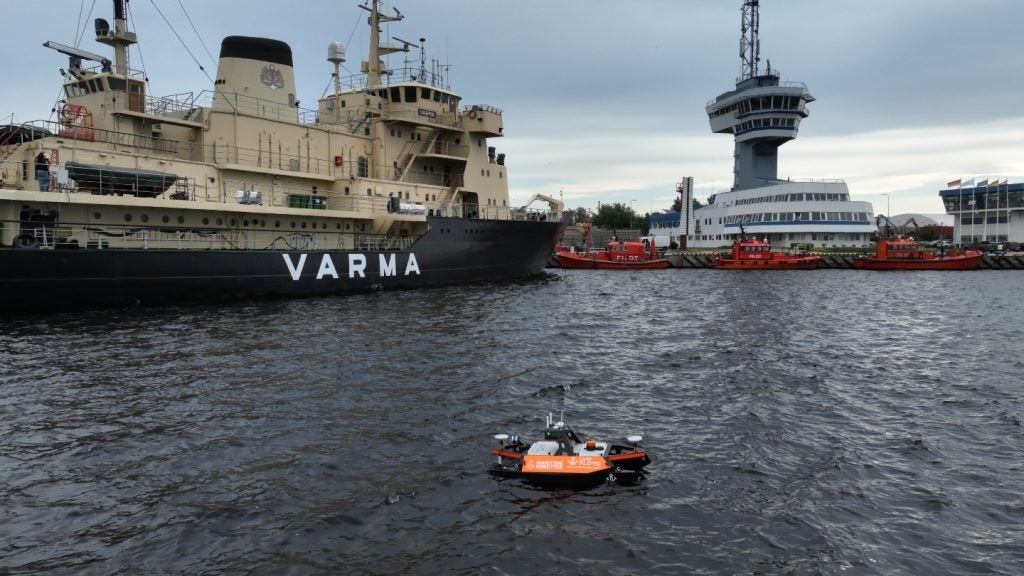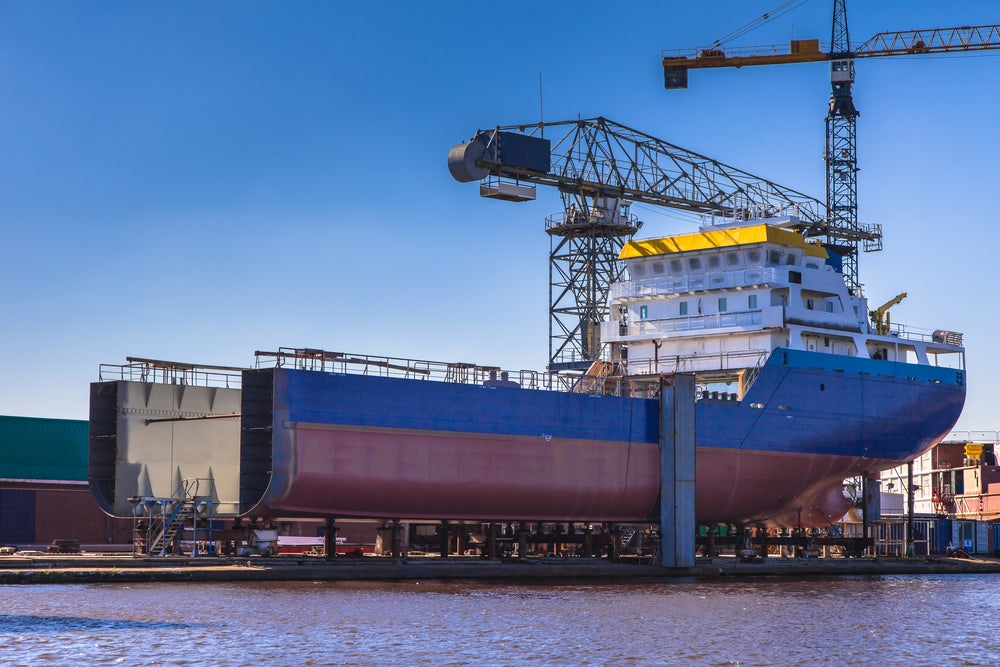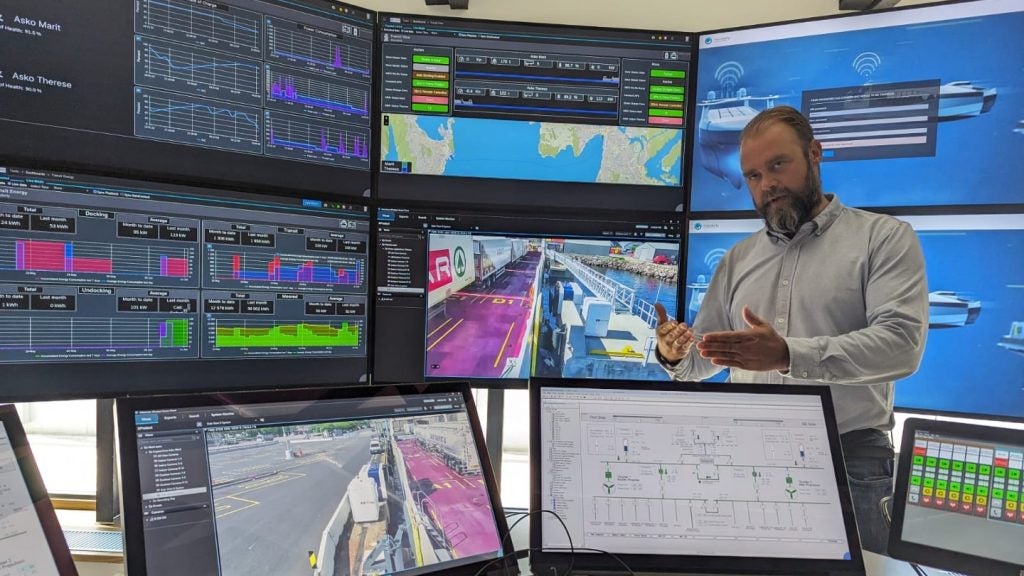Mukilteo multimodal terminal located in Washington, US, is undergoing a major upgrade in order to improve transportation between Whidbey Island and the Seattle-Everett metropolitan area.
It will replace the existing 61-year old seismically weak terminal to provide safe, reliable, and efficient ferry service.
The new terminal site is situated 530m east of the existing terminal and is being built on a 20-acre area, which was previously used by the US Air Force.
Phase one construction works on the project commenced in June 2015 with decontamination of the worksite, while phase two construction began in September 2017. The upgrade is scheduled for completion in fall 2020.
Purpose of Mukilteo multimodal terminal
The Mukilteo / Clinton ferry route is the state’s busiest vehicle ferry route serving more than four million riders a year. Ridership is expected to increase to 5.9 million by 2030.
Mukilteo multimodal terminal has been designed to offer safe, reliable, and efficient transportation services for general-purpose, transit, high-occupancy vehicles (HOVs), pedestrians, and bicyclists travelling between Island County and the mainland. It will also have the capacity to accommodate future transportation demand.
The need for the project has been identified as the existing terminal is facing safety, multi-modal connectivity and capacity issues. The new terminal will also meet local and regional long-range transportation needs.
Mukilteo multimodal terminal details
The new multimodal terminal will mainly include passenger, maintenance, and supervisor buildings. It will also feature a toll plaza with four new toll booths and holding lanes for up to seven vehicles.
The terminal will also feature in-water docking and loading structures. The vehicle holding area of the new terminal will have the capacity to accommodate up to 266 vehicles.
Public parking facilities will also be built between the BNSF railroad and the new First Street extension. The access road and parking for the Mukilteo Station will be modified.
The terminal will feature a waterfront promenade, which will be linked to the city park. The tank farm pier will be removed to eliminate toxic creosote-treated debris from Puget Sound.
The multimodal terminal will also serve as a transit centre in order to provide connections to buses and trains. A new signalised intersection and the extension of First Street to a four-lane road will be completed to reduce congestion on SR 25.
Mukilteo multimodal terminal is designed to achieve Leadership in Energy and Environmental Design (LEED) Silver certification.
Construction details of Mukilteo multimodal terminal
Old walls at the site previously used by the US Air Force were demolished and crushing of the concrete materials was also completed. Outlines of the new Mukilteo ferry terminal building were laid by October 2018.
Construction of the terminal building, holding lanes, toll booths, and all other components commenced in January 2019.
Financing for Mukilteo multimodal terminal
The estimated cost of the project is $167m, which is being sourced through federal and state funds.
In October 2015, the project received a $10m federal grant through the Transportation Investment Generating Economic Recovery (TIGER) programme. Funding for the project was approved by the governor Jay Inslee and Washington State Legislature in 2016.
Puget Sound Regional Council also provided $38m for the new terminal project.
Contractors involved
Washington State Ferries awarded a $48m contract to IMCO General Construction for building the upland elements of the project, including passenger building, promenade, and toll plaza, in December 2018. It also received a $2.26m contract in 2017 for the installation of a deep stormwater line, including outfall and other work at the ferry terminal.
Kal Krishnan Consulting Services (KKCS) is responsible for providing Federal Transit Administration (FTA) project management oversight services for the project.
LMN Architects provided the conceptual design for the new multimodal terminal.
Washington State Ferries contracted Manson Construction to construct the in-water structures for the terminal project, in May 2019.










